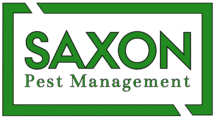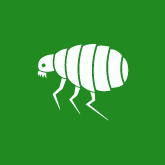No homeowner wants to discover unwelcome guests scurrying through their walls or nibbling on their belongings. Pest infestations can escalate quickly from a minor nuisance to a major problem, causing property damage and health concerns. Recognizing the early warning signs allows you to take swift action before pests establish themselves permanently in your home. (Urban pest infestations have been rising in UK cities, with Romford and wider London areas reporting more cases of rats, cockroaches, and bedbugs in recent years — Pegasus Pest Control, 2024).
Understanding what to look for can save you thousands of pounds in damage and protect your family’s health. From subtle scratching sounds to unusual odors, pests leave behind telltale clues of their presence. This guide will help Romford homeowners identify these early indicators and know when professional intervention becomes necessary.
What Are the First Signs of a Pest Infestation?
The earliest signs of pest activity often go unnoticed because they’re subtle and easily dismissed. Small droppings that look like dark rice grains might be mistaken for debris. Tiny gnaw marks on food packaging could seem like normal wear and tear. These initial indicators require careful observation to detect. (The British Pest Control Association highlights droppings, gnaw marks, and grease trails as the most overlooked early clues — BPCA, 2024).
| Pest Sign | Likely Cause | Why It Matters |
| Rice-grain droppings | Mice | Indicates active infestation |
| Larger blunt droppings | Rats | Sign of established colonies |
| Grease marks on walls | Rodents | Shows regular travel routes |
| Shed insect skins | Cockroaches / Bed bugs | Population already growing |
| Sawdust-like frass | Carpenter ants | Wood damage in progress |
Visual evidence typically appears first. You might notice small holes in walls, baseboards, or food containers. Grease marks along walls, particularly near floor level, indicate rodent travel routes. Shed skins from insects like cockroaches or bed bugs often accumulate in hidden areas like behind appliances or under furniture. (The Natural History Museum lists silverfish, cockroaches, carpet moths, and beetles as among the most common insect pests found in UK homes — NHM, 2023).
Damaged property provides another early warning. Chewed electrical wires, fabric, or paper products signal rodent activity. Wood shavings or sawdust near wooden structures suggest carpenter ants or termites. Even seemingly minor damage warrants immediate attention, as pests typically cause more destruction than initially visible.
How Can You Tell if Rats or Mice Are in Your House?
| Feature | Mice | Rats |
| Droppings | Small, pointed ends, ~3–6mm | Larger, blunt ends, ~12–20mm |
| Gnaw Marks | Small, neat | Large, rough, can chew metal |
| Smell | Faint, ammonia-like | Strong, pungent |
| Noises | Light scratching | Heavy gnawing, scurrying |
Rodents leave distinctive calling cards that help identify their presence. Mouse droppings are small, dark, and pointed at both ends, roughly the size of rice grains. Rat droppings are larger, blunt at one end, and measure about half an inch long. Fresh droppings appear dark and moist, while older ones become dry and crumbly. (The UK is estimated to host around 120 million rats, many of which thrive in urban areas such as Romford — Wikipedia/BPCA).
Gnaw marks reveal rodent activity patterns. Mice create small, clean bite marks on soft materials like cardboard, fabric, and food packaging. Rats produce larger, more aggressive gnaw marks on harder surfaces including wood, plastic, and even metal. Fresh gnaw marks appear light-colored, darkening with age. (Rats have been documented gnawing through wood, insulation, and even brickwork, causing significant structural damage — Pest Control Direct, 2023).
Urine stains and odors provide additional evidence. Rodent urine glows under ultraviolet light, helping identify travel routes and nesting areas. Strong ammonia-like smells, particularly in enclosed spaces like cupboards or basements, often indicate significant rodent populations. Pet cats and dogs may become agitated or fixated on areas where rodents are active. (Rodent urine and droppings are also linked to spreading diseases like leptospirosis and salmonella — BPCA).
What Clues Do Insects Leave in Walls, Ceilings, and Floors?
Insect infestations create unique evidence patterns within your home’s structure. Termites produce mud tubes along foundation walls, basement walls, and other surfaces, creating protective tunnels between their colony and food sources. These pencil-thin tubes consist of soil, wood particles, and termite saliva. (Rentokil identifies termites as among the “top 10 UK pests” capable of compromising structures — Rentokil UK).
Carpenter ants create frass piles beneath their excavation sites. This sawdust-like material contains wood shavings, dead ant parts, and food debris. Unlike termite damage, carpenter ant galleries have smooth, clean walls and may contain ant body parts and food remnants. (Fantastic Pest Control notes that carpenter ant frass is often mistaken for sawdust, but piles also contain insect body parts — 2024).
Bed bugs leave rust-colored or dark spots on mattresses, sheets, and walls near sleeping areas. These stains result from crushed bugs or fecal spots. Sweet, musty odors often accompany severe bed bug infestations. Look for live bugs in mattress seams, bed frames, and furniture crevices during nighttime inspections with a flashlight.
Are Unusual Smells a Sign of Pests?
Pest-related odors often provide the first indication of hidden infestations. Dead rodents create distinctively sweet, sickly smells that intensify over time. These odors typically emanate from walls, crawl spaces, or other inaccessible areas where rodents may have died after consuming poison bait.
Living pest populations also generate characteristic smells. Large cockroach infestations produce oily, musty odors that become particularly noticeable in warm, humid conditions. (Cockroach odors are so distinctive that professional pest controllers often identify infestations by smell alone — Rentokil UK).
Ant colonies may create earthy or sweet smells, depending on their species and food preferences. Urine odors signal active rodent populations. Fresh rodent urine smells sharp and ammonia-like, while older urine creates mustier, more pungent odors. Areas with poor ventilation, such as basements, attics, and storage rooms, tend to concentrate these smells, making detection easier.
Why Do You Hear Noises in Walls or Ceilings at Night?
Nocturnal scratching, scurrying, or tapping sounds typically indicate rodent activity. Mice produce light, quick scratching sounds as they move through wall voids or attic spaces. Rats create heavier, more deliberate sounds, often accompanied by gnawing or chewing noises.
Different pests create distinct sound patterns. Squirrels in attics produce rolling sounds as they move nuts or other food items. Bats create high-pitched squeaking or chittering sounds. Birds trapped in chimneys or vents produce fluttering and chirping sounds, particularly during dawn and dusk hours. (Squirrels and pigeons are among the UK’s most common loft intruders, frequently reported in London and Essex homes — Pegasus Pest Control, 2024).
Sound location helps identify pest types and entry points. Sounds from upper levels typically indicate flying pests or climbing rodents accessing through roof areas. Ground-level sounds suggest mice or rats entering through foundation gaps or doors. Recording when you hear these sounds helps pest control professionals determine the most effective treatment approach.
What Damage Do Pests Cause in Homes?
| Pest | Damage Type | Risk to Homeowners |
| Termites | Wooden beams, floor joists | Structural instability |
| Rats | Wiring, insulation, food contamination | Fire risk, disease |
| Mice | Fabrics, food packaging | Food waste, allergens |
| Bed bugs | Mattresses, upholstery | Bites, poor sleep, stress |
| Clothes moths | Carpets, clothing | Long-term property damage |
Structural damage represents one of the most serious consequences of pest infestations. Termites can compromise wooden support beams, floor joists, and wall studs, potentially affecting your home’s structural integrity. Carpenter ants hollow out wooden structures for nesting, weakening load-bearing components over time. (The top 10 most damaging pests in UK homes include termites, ants, and rodents — Rentokil UK).
Rodents pose significant fire hazards by chewing electrical wiring. Damaged insulation on electrical cables can cause short circuits, power outages, or house fires. Insurance companies report that rodent-damaged wiring contributes to thousands of house fires annually across the UK. (Studies estimate that 20–40% of unexplained house fires in the UK may be linked to rodent-chewed wiring — Prysmian UK, 2023).
Property damage extends beyond structural concerns. Rats and mice contaminate food supplies, requiring disposal of affected items. Fabric-eating pests like clothes moths damage clothing, carpets, and upholstery. Stored items in attics, basements, and garages often suffer extensive damage from nesting materials and waste products.

When Should Romford Homeowners Call Pest Control?
| Situation | Action Needed |
| Signs persist > 2 weeks | Call professionals |
| Strong odors (urine, dead rodents) | Call immediately |
| Multiple nests / entry points | Call immediately |
| DIY traps ineffective | Call professionals |
| Large-scale contamination | Call immediately |
Professional intervention becomes necessary when DIY methods fail to resolve pest problems within two weeks. If you continue seeing fresh signs of activity despite using traps, baits, or exclusion methods, professional expertise can identify underlying issues and implement more effective solutions. (BPCA advises that if pest activity persists beyond 10–14 days, homeowners should escalate to professional services — BPCA).
Health risks warrant immediate professional attention. Large rodent infestations pose disease transmission risks through contaminated surfaces and air quality issues. Venomous spiders, wasps, or other dangerous pests require specialized removal techniques and safety equipment.
Extensive property damage indicates established infestations requiring professional treatment. Multiple entry points, widespread contamination, or structural damage suggest pest populations have grown beyond DIY control methods. Professional services can assess damage extent and prevent further deterioration. (Local pest firms note that infestations in London and Essex often escalate more rapidly in high-density housing — Pegasus Pest Control).
Protecting Your Romford Home from Future Infestations
Early detection provides your best defense against serious pest problems. Regular inspections of your home’s exterior, basement, attic, and storage areas help identify problems before they escalate. Monthly checks during peak pest seasons and quarterly inspections throughout the year maintain effective monitoring. (UK pest seasonality shows ants/wasps peak in summer, rodents in winter, making quarterly checks crucial — PestBuddy, 2024).
Professional pest control services offer comprehensive solutions tailored to Romford’s specific pest challenges. Experienced technicians understand local pest behavior patterns, seasonal activity cycles, and effective treatment methods for the area’s most common infestations. (The BPCA recommends scheduled inspections of lofts, basements, and exterior walls to stop infestations before they spread — BPCA).
Taking action at the first signs of pest activity protects your property investment and family’s health. The cost of early intervention typically represents a fraction of the expense required to address established infestations and repair resulting damage.






















